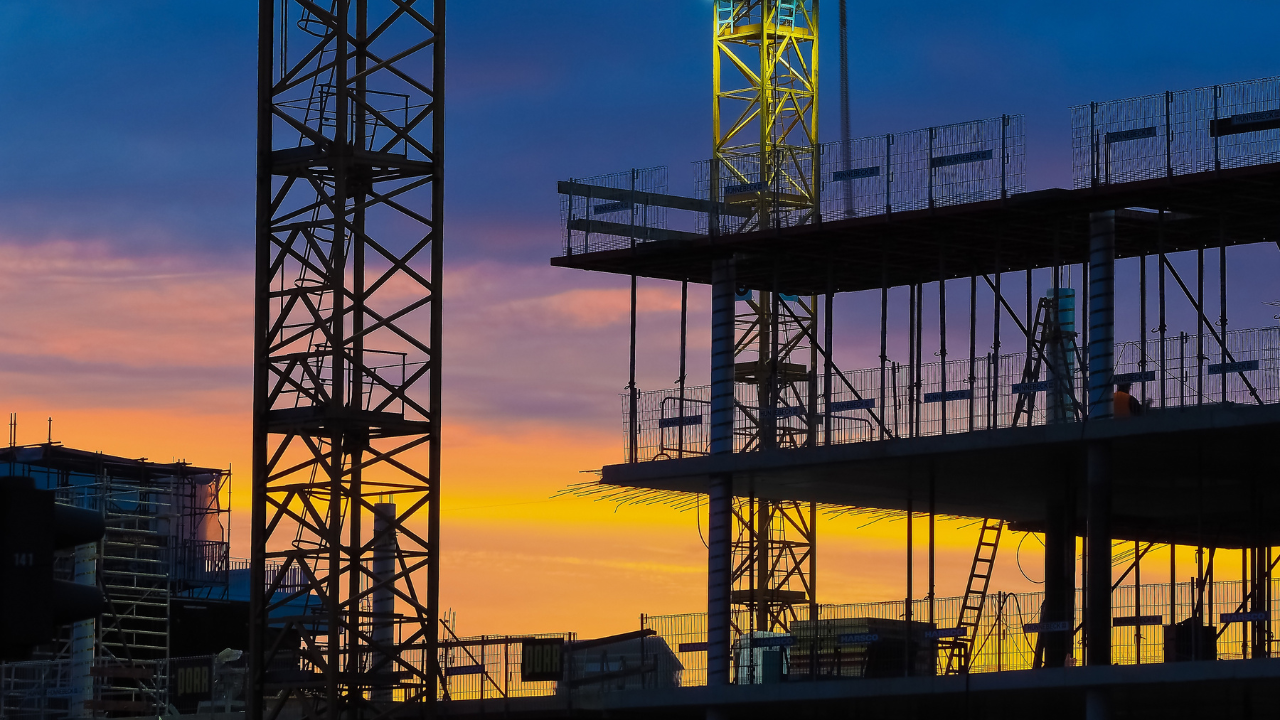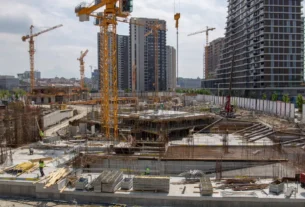The construction industry, traditionally known for its reliance on manual labor, is undergoing a significant transformation. Emerging technologies such as robotics, automation, and artificial intelligence (AI) are reshaping the way buildings are designed, constructed, and maintained. While these advancements bring undeniable benefits—such as increased efficiency, improved safety, and cost savings—they also raise critical ethical and labor-related questions.
What happens to millions of construction workers when machines take over manual tasks?
How should governments, companies, and society respond to this shift?
This article explores the current state of automation in construction, its implications for labor, and the ethical dilemmas that surround this evolution.
The Rise of Robotics and AI in Construction
Robots and AI have entered the construction world through various forms:
- 3D Printing Robots: Used for printing homes, bridges, and commercial spaces using concrete or composite materials.
- Bricklaying Robots: SAM100 (Semi-Automated Mason) can lay bricks six times faster than a human.
- Demolition Robots: Compact machines such as Brokk can safely dismantle structures without endangering human lives.
- Autonomous Vehicles and Drones: For transporting materials and surveying sites.
- AI-Powered Planning Tools: AI is now used to design floor plans, predict project risks, manage workflows, and optimize schedules.
These innovations are improving accuracy, reducing construction times, and lowering long-term costs for developers.
In addition, AI-driven Building Information Modeling (BIM) systems are revolutionizing pre-construction planning. Machine learning algorithms can now identify cost-saving opportunities, anticipate project delays, and suggest safer designs. Companies like Boston Dynamics are developing robots capable of navigating complex construction sites, performing tasks such as inspection and data collection in real time.
Why the Construction Sector Needs Automation
Despite being one of the world’s largest industries—contributing roughly 13% to the global GDP—the construction sector has historically lagged in productivity. According to a McKinsey report, construction productivity grew by just 1% annually over the past 20 years compared to 3-4% in manufacturing.
Key challenges that automation aims to address:
- Labor shortages: Especially in developed nations like the U.S., UK, and Japan where the aging workforce and lack of skilled labor are pressing issues.
- Safety risks: Construction is among the top industries for workplace injuries and fatalities.
- Project delays: Weather, human error, and supply chain issues often result in delays.
- Cost overruns: Around 90% of megaprojects exceed budget due to inefficiencies.
Robots and AI can operate around the clock, withstand hazardous environments, and deliver consistent performance, making them ideal for high-risk, repetitive tasks. Autonomous machinery can work under harsh weather conditions without compromise, significantly reducing seasonal delays.
Labor Displacement: Who’s at Risk?
The International Labour Organization (ILO) estimates that nearly 300 million people work in construction globally. A significant portion of these workers—particularly unskilled laborers—are at risk of displacement due to automation.
Jobs Most at Risk:
- Bricklayers
- Painters
- Surveyors
- Site supervisors
- Equipment operators
Jobs Least at Risk:
- Architects
- Civil engineers
- Project managers
- Health and safety inspectors
- Technicians who maintain robots
In India, where construction is one of the largest employment generators (second only to agriculture), the implications are profound. Millions of migrant workers depend on daily wage construction work. Sudden job losses could have cascading effects on urban and rural economies.
A study by Oxford Economics predicts that up to 20 million manufacturing jobs could be replaced by robots by 2030. While construction-specific data is still emerging, similar trends are expected.
Ethical Dilemmas: Machines vs. Humans
1. Job Loss and Inequality
Replacing labor with robots could lead to mass unemployment, especially in developing economies. This might worsen economic inequality, creating a larger gap between those who benefit from technology and those who don’t.
2. Skill Obsolescence
As machines take over physical labor, the demand for digital and technical skills rises. The existing workforce, often lacking access to education and training, may struggle to adapt.
3. Worker Surveillance and Data Privacy
Smart helmets, wearable sensors, and AI cameras monitor workers’ every move. While intended to improve safety and productivity, they raise privacy concerns and could lead to a culture of surveillance and micromanagement.
4. Bias in AI Decision-Making
AI systems used for hiring, performance evaluation, or resource allocation can reflect human biases if not properly trained. This could lead to discrimination in labor management.
5. Dehumanization of Labor
The mechanization of construction risks reducing laborers to data points, stripping away the human dignity traditionally associated with physical work.
The Role of Governments and Policy Makers
To ensure a just transition, governments must play an active role. This includes:
- Establishing Regulations: Define ethical boundaries for the use of robotics and AI in construction.
- Upskilling and Reskilling: Offer vocational training in mechatronics, coding, robotics maintenance, and AI integration.
- Tax Incentives for Human Employment: Penalize excessive automation and reward companies that balance tech with human labor.
- Universal Basic Income (UBI): A controversial but increasingly discussed idea to offset job loss.
In India, initiatives like Skill India and Pradhan Mantri Kaushal Vikas Yojana (PMKVY) can be aligned with the needs of a tech-driven construction industry. International collaborations with countries that have successfully integrated automation into construction could provide a learning curve.
Corporate Responsibility: Balancing Profit with People
Construction companies must balance profitability with social responsibility. Ethical companies can:
- Adopt Inclusive Tech: Use automation to assist, not replace, human workers (e.g., exoskeletons that reduce strain).
- Partner with Training Institutions: Collaborate with universities and ITIs to develop relevant curricula.
- Offer Internal Reskilling Programs: Identify employees whose jobs are at risk and train them for emerging roles.
- Ensure Worker Participation: Involve workers in decision-making about automation adoption.
Examples include large global firms like Skanska and Bechtel, which have launched internal upskilling programs to support displaced workers.
Case Studies: Where Ethics Meets Execution
1. ICON – 3D Printed Homes in the US
ICON uses giant 3D printers to build homes for the homeless and disaster-hit regions. While efficient, the company faces questions on labor replacement.
2. Tata Projects, India
Tata’s use of drones and AI for project tracking has improved deadlines and safety. They balance automation with workforce retention by retraining existing teams.
3. Autonomous Construction Robots in Japan
Faced with a declining labor force, Japan uses robotic arms, AI-based welders, and automated cranes. However, these come with extensive policy guidelines to safeguard jobs.
4. Dubai’s 3D Printed Office
Dubai inaugurated the world’s first fully functional 3D printed office. It was constructed in just 17 days with 50% reduced labor, offering a futuristic model for urban infrastructure development.
5. China’s Broad Sustainable Building
This Chinese firm built a 57-storey skyscraper in 19 days using prefabricated modules and AI-coordinated logistics. The company claims reduced waste and increased safety but faces criticism for low job creation.
Cultural & Psychological Impact
Work isn’t just a source of income—it’s a source of identity, purpose, and dignity. The introduction of robots could:
- Erode social bonds formed on worksites.
- Lead to increased stress and anxiety about job security.
- Reduce job satisfaction if human oversight is diminished.
Fostering psychological resilience through counseling, team-building activities, and workplace transparency is essential in helping workers adapt.
Conclusion
The construction industry stands at a crossroads. Embracing robotics and AI can bring about unprecedented efficiencies and innovations—but it must be done responsibly. The ethical challenge is not just technological—it’s human. Ensuring that automation doesn’t leave millions behind will require coordinated efforts from governments, industry, academia, and civil society.
The construction of tomorrow should not just be smart—but also fair.







